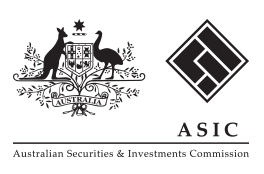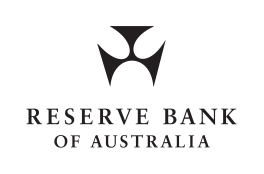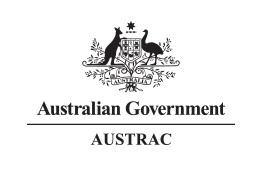
Australian Securities and Investments Commission (ASIC)
ASIC's Innovation Hub, established in 2015, has five elements:
- The first element is engagement with other FinTech initiatives, including physical hubs and co‑working spaces for start‑ups. ASIC makes senior ASIC staff available from time to time to present information and answer questions.
- The second element is informal guidance from ASIC to help new businesses consider the important regulatory issues. Eligible businesses can request guidance from ASIC through our website. ASIC expects that this guidance will minimise the time and cost of applying for a licence or relief from the law.
- Thirdly, ASIC has established new 'Innovation Hub' webpages for innovative businesses to access information and services targeted at them. This information will be updated and enhanced on an ongoing basis.
- The fourth element is a senior internal taskforce to coordinate our work on new business models. The taskforce draws together learnings and skills from across ASIC.
- The final element is the Digital Finance Advisory Committee (DFAC) that meets quarterly, which was established to advise ASIC on its efforts in this area. DFAC members are drawn from a cross‑section of the FinTech community, as well as academia and consumer backgrounds. Other financial regulators are observers on DFAC.
ASIC's Innovation Hub is consistent with the Government's deregulatory agenda. ASIC is streamlining its engagement with the FinTech sector and removing red tape. However, ASIC will not compromise the fundamental principles of the regulation of financial products and services. ASIC will continue to prioritise measures to build investor and consumer trust and confidence in these emerging business models.
The Innovation Hub has worked on 100 matters relating to 76 entities. Most of these entities have proposed robo‑advice, marketplace lending, crowdfunding, payments or other credit business models. Some businesses are looking at Blockchain technology opportunities.
ASIC has presented at a range of FinTech 'meet‑ups' and information sharing events to discuss the Innovation Hub and the approach to new business models. In some cases, ASIC have arranged to present jointly with other financial regulators and they are currently planning further engagement with industry.
ASIC meets regularly with international regulators including the Financial Conduct Authority (FCA) (UK), European Securities and Markets Authority, the Monetary Authority of Singapore and Consumer Financial Protection Bureau (US) to discuss innovation developments and policy proposals.
ASIC plans to enter a Cooperation Agreement with the FCA (a world first) by the end of March 2016. This agreement will include processes for ASIC and the FCA making referrals of FinTech start‑ups to each other. ASIC has also established an ongoing relationship with the World Economic Forum and its team working on FinTech workstreams — such as Blockchain and digital identity.
ASIC has also set up taskforces into automated financial advice (robo‑advice), digital marketplace lending, equity crowdfunding and Blockchain. The taskforces are intended to proactively deal with regulatory challenges raised by these developments and also assist in drafting additional tailored guidance for industry. ASIC is also a member of the Council of Financial Regulators sub‑committee on Blockchain.

The Australian Prudential Regulation Authority (APRA)
APRA views FinTech as having the potential to improve customer products and services, and the efficiency and competitiveness of the financial system.
APRA has always allowed the industry to innovate and determine how best to apply new technology, without unnecessary regulatory impediment. APRA's attitude to emerging technologies in general is to adopt a principles‑based, technology‑neutral approach, informed by consideration of materiality, criticality and sensitivity.
Many FinTech developments will not fall directly within APRA's regulatory perimeter, and hence will not need approvals or oversight from APRA, but will be employed by APRA regulated entities.
To facilitate this, APRA seeks to maintain a principles‑based prudential framework, without bias to any particular technologies or business models. For example:
- APRA recently issued guidance to regulated entities on the use of shared computing services (including cloud), designed to institute a graduated approach to the use of these types of services and technology. Where risk is low, APRA does not seek to intervene in the use of new technology; where the risk is heightened (e.g. to the accuracy and security of core records of account or to the continuity of critical operations), our intensity of engagement will be higher.
- APRA is currently reviewing its prudential standards/guidance in relation to outsourcing and business continuity management, to ensure, amongst other matters, that our approach is reflective of current industry developments.
APRA has also engaged with a number of FinTech hubs, and participated in ASIC's Digital Finance Advisory Committee, with a view to:
- remaining up to date with emerging technology and its application to the financial sector; and
- educating potential start‑ups on the regulatory framework (including how to establish/operate while remaining outside the prudential regulatory perimeter).

Reserve Bank of Australia (RBA)
RBA's New Payments Platform (NPP) is a project to build new payments infrastructure that will be at the global forefront. It will enable payments for Australian households, businesses and government entities that are:
- real‑time (i.e. immediate notification to the recipient and also immediate access to the funds);
- available 24/7 (even on weekend, evenings etc);
- data‑rich (users will be able to send much more data than the existing 18 characters. This could include links to documents. It will enable businesses to send invoices with payment requests. It will facilitate straight‑through processing. It will enable businesses to link payments to other aspects of the transaction.); and
- easily addressed (the sender won't have to know the recipient's BSB and account number. A mobile number may be all that is required).
The NPP was an industry response to the RBA's 2012 conclusions from its Strategic Review of Innovation in the Payments System. This Review was prompted by the RBA's concern that financial institutions in the Australian payments industry had trouble working together on projects that required collaborative innovation, which is very necessary in networks such as the payments system.
As a result, the RBA felt that the services available to end‑users of the payments system were falling behind the services available in some other countries. The two‑year Review included significant consultation with the established players in the payments system, innovators and end‑users (households, businesses and government).
The RBA asked industry to come back with a proposal as to how it proposed to fill the gaps that had been identified in the Review. In response, a group of large and small institutions worked together to come up with a proposal which was initially progressed by the Real‑Time Payments Committee (RTPC). The RTPC included the four majors, institutions representing smaller traditional financial institutions, as well as PayPal (a non‑traditional financial institution).
The project is now being funded by 12 financial institutions (including the four majors, the RBA, foreign banks, mid‑sized banks, and three organisations providing payment services to the credit unions and building societies). At the same time as the industry is working on infrastructure to provide real‑time links between all financial institutions, the RBA is building infrastructure that will allow real‑time settlement of all transactions, which will reduce risk in the payments system.
The NPP is scheduled to go live in late 2017. It will significantly enhance the services that can be provided to end‑users. It can be thought of as a set of new rails for the payments system that will be available for sorts of 'overlay services', such as tailored services that can be provided by financial institutions and other innovators, some of which are already being planned and others that we may not yet be able to imagine.

Attorney‑General's Department
The current review of Australia's anti‑money laundering and counter‑terrorism financing (AML/CTF) regime is considering a range of measures to support the development of the FinTech industry. The review is considering whether AML/CTF regulation should be extended to include convertible digital currency exchanges.
The review is also considering how to make the obligations under the AML/CTF regime technology neutral. This will promote the development of new technology to more efficiently perform key functions such as the biometric identification and verification of identity. The report on the review is expected to be provided to the Minister for Justice shortly.

Australian Transaction Reports and Analysis Centre (AUSTRAC)
AUSTRAC has been closely engaging with various stakeholders and collaborating with FinTech start‑ups which are involved in the digital transformation of the financial services and payments sectors in Australia for the purposes of:
- recognising opportunities for the application of regulatory safeguards in the development cycle of various transformation technologies; and
- ultimately reducing the regulatory burden on current and future regulated businesses.
AUSTRAC will provide support through dedicated staff working with FinTech innovators on site in key innovation hubs.
AUSTRAC is of the view that Blockchain or distributed ledger technologies have the potential to significantly reduce the costs of compliance and regulation imposed on reporting entities.
This new technology can ensure that sensitive financial data used for intelligence purposes remains secure, transparent and protected through the use and application of encryption. For such a system to be resilient to systemic risk or criminal exploitation, two levels of complementary regulatory approaches will be required:
- a high-level guiding legislative framework; and
- a set of agreed rules that determine the operation of the algorithms encoded by the software.
AUSTRAC will work with stakeholders to realise the potential of new technologies such as Blockchain, as well as co‑designing and developing these new regulatory approaches.